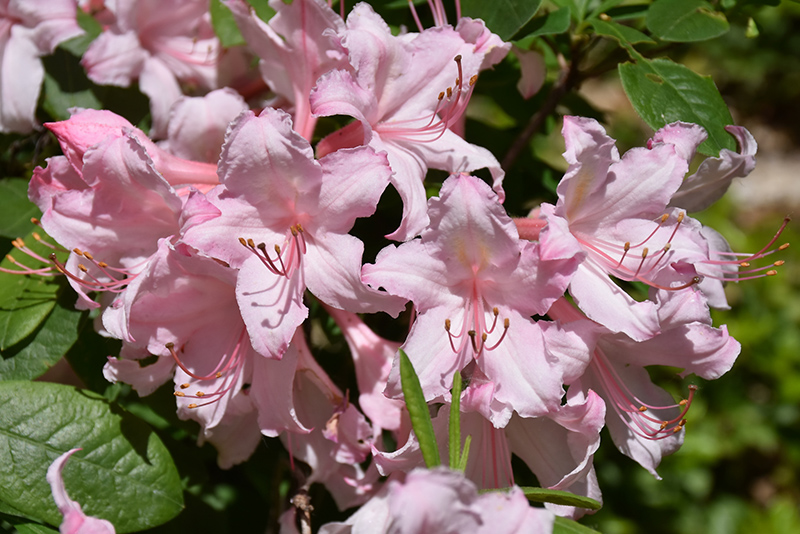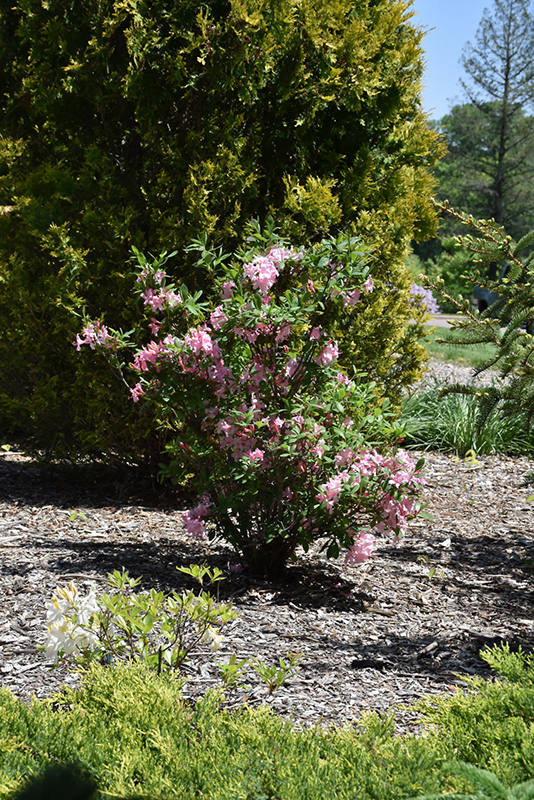Digging deeperPlant Library
Candy Lights Azalea
Rhododendron 'Candy Lights'
Height: 5 feet
Spread: 5 feet
Sunlight:
![]()
![]()
Hardiness Zone: 4
Group/Class: Northern Lights Series
Description:
A new introduction from the University of Minnesota to replace the hard-to-propagate Pink Lights, with very fragrant clear-pink flowers in spring; absolutely must have well-drained, highly acidic and organic soil, use plenty of peat moss when planting
Ornamental Features
Candy Lights Azalea is smothered in stunning clusters of fragrant pink trumpet-shaped flowers with a buttery yellow blotch at the ends of the branches in mid spring, which emerge from distinctive rose flower buds before the leaves. It has green deciduous foliage. The narrow leaves do not develop any appreciable fall color.
Landscape Attributes
Candy Lights Azalea is an open multi-stemmed deciduous shrub with a more or less rounded form. Its relatively coarse texture can be used to stand it apart from other landscape plants with finer foliage.
This is a relatively low maintenance shrub, and should only be pruned after flowering to avoid removing any of the current season's flowers. It has no significant negative characteristics.
Candy Lights Azalea is recommended for the following landscape applications;
- Accent
- Mass Planting
- General Garden Use
Planting & Growing
Candy Lights Azalea will grow to be about 5 feet tall at maturity, with a spread of 5 feet. It tends to be a little leggy, with a typical clearance of 1 foot from the ground, and is suitable for planting under power lines. It grows at a slow rate, and under ideal conditions can be expected to live for 40 years or more.
This shrub does best in partial shade to shade. It requires an evenly moist well-drained soil for optimal growth, but will die in standing water. It is very fussy about its soil conditions and must have rich, acidic soils to ensure success, and is subject to chlorosis (yellowing) of the foliage in alkaline soils. It is somewhat tolerant of urban pollution, and will benefit from being planted in a relatively sheltered location. Consider applying a thick mulch around the root zone in winter to protect it in exposed locations or colder microclimates. This particular variety is an interspecific hybrid.
Nursery Notes
Morning sun only, a northeast site protected from afternoon sun is best.
A NetPS Plant Finder tool
This Plant Library is for informational purposes only. We may or may not carry the items listed. During many times of the year, we may carry many more plants in our store than are listed in the Plant Library. Please contact us directly at 303-690-4722 or visit our store for current availability and for assistance.

